Adolescence
Unmanned: An Unnatural History of Human Castration
From unkindest cut to soaring songs of praise.
Posted July 14, 2016 Reviewed by Ekua Hagan

In the extensive catalogue of cruelty that humans have inflicted on others, castration surely occupies a special place, not least because permanent sterilization is the outcome. As in all other male primates, at birth a baby boy’s testes have descended from the belly cavity into a purse-like scrotum alongside the base of the penis. It is hence a simple matter to slice away the descended testes (orchidectomy) and maybe the penis as well. In addition to inevitable infertility, castration also greatly reduces production of the male hormone testosterone.
Emasculation has been variously employed to make male slaves more docile, to punish enemies or criminals, and to reduce the noxious urges of sex offenders. In modern medical practice, orchidectomy is most commonly employed to treat testicular cancer, and is generally confined to removing only one testis. But removal of both testes may be performed to counter prostate cancer by lowering testosterone levels, or following major physical injury.
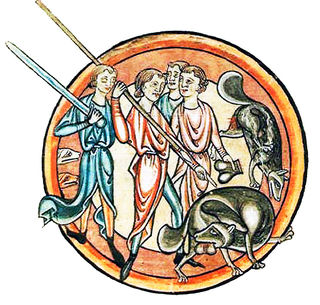
The word “castration” has often been traced back to a Mediaeval myth about beavers, whose Latin name is castor. Beavers were hunted to harvest sweet-smelling “castoreum” from scent glands near the root of the penis. Purportedly, a cornered beaver would bite off its own scrotum and toss it to its pursuers to end the hunt. But there is a major flaw in this story because in beavers — as in many other water-living mammals, but in contrast to primates — the testes do not descend but remain in the belly cavity. So there is no scrotum to bite off! Oftentimes, the dangling scent glands at the penis base have been misreported as the beaver’s testes.
Effects of castration
Castration after puberty, turning men into eunuchs, diminishes or completely eliminates the sex drive. Muscle mass, physical strength, and body hair are all typically reduced, and eunuchs are usually beardless. Breast enlargement is also common. In the most familiar example of castration to prevent cuckoldry, eunuchs have often been used as harem guards. Historically, however, eunuchs — seen as less likely to stir up unrest — were far more widely engaged as servants, military commanders and senior political officials.
The first records of deliberate castration to produce eunuchs, from the Sumerian city of Lagash, date back some 4,000 years. In China, the eunuch system, which dates back almost as far, was firmly entrenched in the imperial culture and persisted through two dozen dynasties until 1911, when the last emperor was deposed. Castration was performed not only as a punishment but also as a prerequisite for entering imperial service. Towards the end of the Ming Dynasty in the mid-17th Century, some 70,000 eunuchs were employed to serve the emperor. The last known eunuch of the Chinese imperial court, Sun Yaoting, died just before his 94th birthday in 1996.
In an entirely different context, castration has also been carried out on young boys before puberty to prevent their voices from breaking. Early castration blocks the radical size increase in the larynx that otherwise produces the characteristic “Adam’s apple” of an adult man. After puberty, the total length of male vocal cords increases by 63 percent, whereas female vocal cords grow only half as much. In 1970, a British historian published a fascinating account of voice breaking three centuries ago by examining data covering 20 years for members of Johann Sebastian Bach's choir in Leipzig. He found that the average age for voice breaking was about 18. The usual age for castration to prevent this happening was 7 to 9 years old. Men castrated before puberty retain an unusual high-pitched singing voice broadly comparable to that of a soprano, mezzo-soprano, or contralto, but covering a strikingly wide range.
Skeletons of castrati
Understandably, little is known about effects of castration on the human skull and skeleton. However, in recent years a number of studies have begun to yield information. For instance, a 2010 paper by J.T. Eng and colleagues reported results of an investigation of two skeletons from eunuchs from the Ming Dynasty of China (1368-1644 AD). One individual was apparently castrated before puberty, as his long limbs indicated that fusion at the ends of long bones, which typically occurs by adulthood, had been delayed.
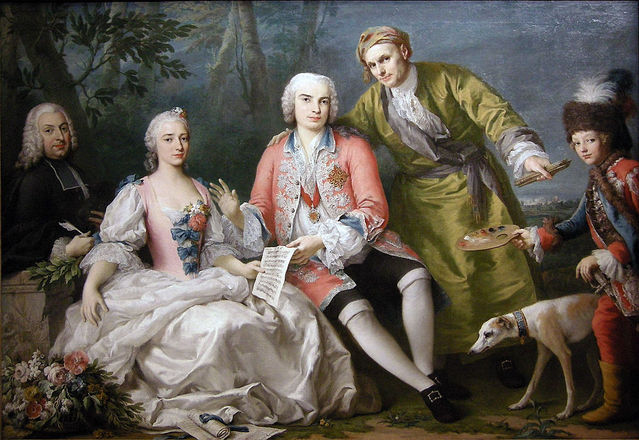
Subsequently, in 2011, the aptly named Maria Belcastro and her team published a report on the exhumed skeleton of the Italian castrato singer Carlo Broschi (1705-1782), who achieved legendary fame under his stage name Farinelli. Although his skeleton was poorly preserved, examination revealed features that may be linked to the effects of castration, including strikingly long limb-bones, incomplete bone fusion, and low bone density (osteoporosis). The length of the only completely preserved limb-bone — an ulna from the lower arm — yielded an estimated body height of 6’ 3”. The front end of the skull cap was also severely affected by hyperostosis frontalis interna, a condition in which the inner surface of the frontal bones is symmetrically thickened. This is quite common in postmenopausal women but rare in men.
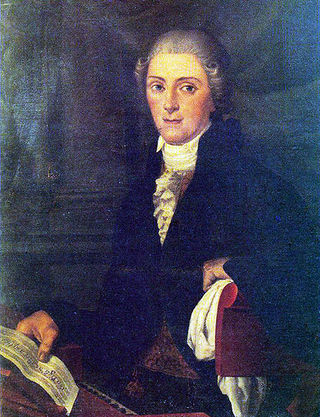
Earlier this year, Alberto Zanatta and colleagues reported similar findings, including a similar body height of about 6’ 3” and signs of osteoporosis, for the largely complete skeleton of a second castrato singer, Gaspare Pacchierotti (1740-1821). As with Carlo Broschi’s skeleton, some bones were incompletely fused. However, there were no signs of hyperostosis frontalis interna at the front end of the skull.
Castrati in the Sistine Chapel
With Italy as its epicentre, enthusiasm for musical performances of castrati prevailed for over three hundred years, beginning in the mid-16th Century and continuing until the early 1900s. This was an established feature in baroque and classical music, and prominent composers such as Handel (1685-1759) and Mozart (1756-1791) specifically wrote rôles for castrati into several operas and oratorios. From the very outset, however, the Roman Catholic Church played a decisive role. Indeed, Italian church records from the 1550s provide the earliest known documentation, and by 1558 castrati were included in the choir of the Sistine Chapel. In fact, they became essential after the Vatican banned women from church choirs in the mid-16th Century. In 1589, Pope Sixtus V reorganized the choir of St Peter’s Basilica in Rome, explicitly including castrati in his bull Cum pro nostri temporali munere. In the face of increasing opposition, in 1878 Pope Leo XIII prohibited employment of new castrati by the Roman Catholic Church and Pope Pius X pronounced an official end to the practice in 1903.
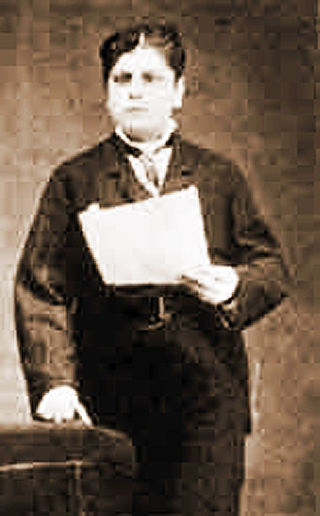
The last castrato employed by the Vatican, Alessandro Moreschi — the “Angel of Rome” — sang in the Sistine Chapel choir from 1883 to 1903. Although castrati generally tend to be quite tall, he was only middling in height. As the last surviving Sistine castrato, he died in 1922 at the age of 63. Moreschi was the only castrato to make solo recordings and in a rare, spine-chilling recording from 1902 his soprano voice can be heard singing Gounod's arrangement of Bach's Ave Maria. It drives home the concluding comment made by James Franklin (Hektoen Institute of Medicine, Chicago) in a 2010 public lecture: Early castration is a particularly dramatic form of child abuse.
Castration and lifespan
One potential upside of castration (or perhaps just an unwelcome extension of all its downsides) is the possibility that removing the testes might extend an individual’s lifespan. It has been proposed that there is a trade-off between testosterone levels and lifespan in mammals, which might account for the fact that women tend to live longer than men. But in 1993 Eberhard Nieschlag and colleagues reported finding no difference in lifespan between castrati and intact men. 50 castrati with outstanding reputations as singers born between 1581 and 1858 were compared to a control group of 50 intact male singers who had achieved comparable fame and were closely matched by year of birth. The average lifespan of the castrati was 65.5 years, not significantly different from the 64.3 years for intact singers.
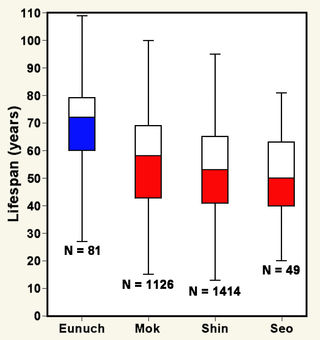
Yet, in a 2012 paper, Kyung-Jin Min and colleagues examined historical data for longevity of 81 Korean eunuchs. Average lifespan was found to be 70 years, almost 17 years longer than for three contemporary samples of intact men of similar socio-economic status. So we are left with an unexplained disparity between the results reported by Nieschlag and colleagues for European castrati and those of Min and colleagues for Korean eunuchs. Could it be that the stresses of professional singing offset the potential increase in longevity?
References
Belcastro, M.G., Todero, A., Fornaciari, G. & Mariotti, V. (2011) Hyperostosis frontalis interna (HFI) and castration: the case of the famous singer Farinelli (1705-1782). Journal of Anatomy 219:632-637. doi: 10.1111/j.1469-7580.2011.01413.x
Daw, S.F. (1970) Age of boys' puberty in Leipzig, 1729-49, as indicated by voice breaking in J.S. Bach's choir members. Human Biology 42:87-89.
Eng, J.T., Zhang, Q., Goto, M. & Hanihara, T. (2010) Skeletal effects of castration on two eunuchs of Ming China. Anthropological Science 118:107-116.
Franklin,J. (2010) The castrati: a physician's perspective, part 1 http://hektoeninternational.org/index.php?option=com_content&view=artic…
Franklin,J. (2010) The castrati: a physician's perspective, part 2. http://hektoeninternational.org/index.php?option=com_content&view=artic…
Jenkins, J.S. (1998) The voice of the castrato. Lancet 351:1877-1880.
Killgrove, K. (2015) Castration affected skeleton of famous opera singer Farinelli, archaeologists say. http://www.forbes.com/sites/kristinakillgrove/2015/06/01/castration-aff…
Killgrove, K. (2016) How castration and opera changed the skeleton of 19th Century singer Pacchierotti. http://www.forbes.com/sites/kristinakillgrove/2016/06/28/how-castration…
Min, K.-J., Lee, C.-K. & Park, H.-N. (2012) The lifespan of Korean eunuchs. Current Biology 22:R792-R793.
Moreschi singing Ave Maria: https://www.youtube.com/watch?v=KLjvfqnD0ws
Nieschlag, E., Nieschlag, S. & Behre, H.M. (1993) Life span and testosterone. Nature 366:215.
Zanatta, A., Zampieri, F., Scattolin, G. & Bonati, M.R. (2016) Occupational markers and pathology of the castrato singer Gaspare Pacchierotti (1740-1821). Scientific Reports 6, Art. No. 28463. doi: 10.1038/srep28463




